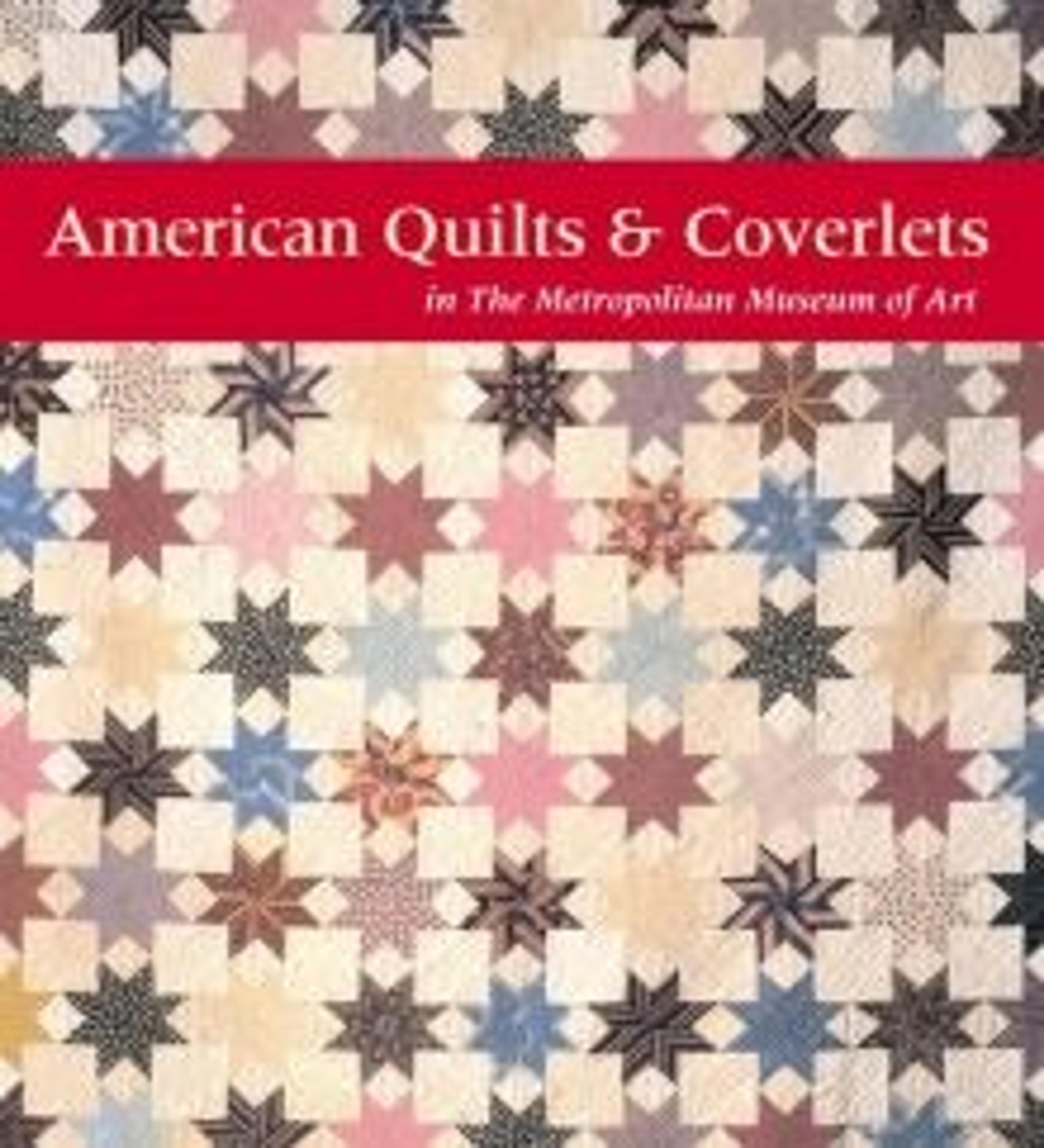Quilt, Fruit Baskets pattern
This Fruit Baskets quilt is said to have been made in Providence, Rhode Island. Its gray background is charmingly ornamented with meticulously quilted baskets and epergnes, topped by brightly colored appliquéd velvet fruits and flowers. Stitched to each corner of the white silk backing is an appliquéd block like the ones on the front. Such intricacies indicate that this quilt was surely made for display.
Silk quilts have a long tradition in America. Made in Massachusetts in the early eighteenth century, the Saltonstall quilt (Peabody Essex Museum, Salem, Massachusetts), which is composed of small triangles of silk, is believed to be the earliest known American pieced quilt. Quilted silk petticoats were worn in the eighteenth century by fashion-conscious American women, and whole-cloth silk quilts very similar to those petticoats may be found in a number of collections.
However, it was during the 1850s and 1860s that silk attracted new interest as a favored material for pieced quilts. Dress silks were generally used; these silks were often "weighted," an industrial process in which the cloth was treated with mineral salts to give it more body. Fashions in clothing had changed by mid-century, and fine cotton dresses were being replaced by silks. One reason for this was that silk became more plentiful and less expensive after 1826, when the British government rescinded its prohibition against the importation of French silks. The English silk industry was forced to expand rapidly in order to compete with the better-equipped French manufacturers. Probably borrowing from the technical advances made by their European neighbors, the Americans began to experiment with large-scale silk production during the 1840s. The 1845 edition of Webster's "Encyclopedia of Domestic Economy" notes: "From some specimens of American silk lately sent over to this country [England] there appears to be some reason for supposing that, before long, the material may be produced to a considerable extent in that country." It seems that with more silk being imported from England and France and silk also being produced in this country, Americans had easy access to silks of all types by about 1860.
Silk quilts have a long tradition in America. Made in Massachusetts in the early eighteenth century, the Saltonstall quilt (Peabody Essex Museum, Salem, Massachusetts), which is composed of small triangles of silk, is believed to be the earliest known American pieced quilt. Quilted silk petticoats were worn in the eighteenth century by fashion-conscious American women, and whole-cloth silk quilts very similar to those petticoats may be found in a number of collections.
However, it was during the 1850s and 1860s that silk attracted new interest as a favored material for pieced quilts. Dress silks were generally used; these silks were often "weighted," an industrial process in which the cloth was treated with mineral salts to give it more body. Fashions in clothing had changed by mid-century, and fine cotton dresses were being replaced by silks. One reason for this was that silk became more plentiful and less expensive after 1826, when the British government rescinded its prohibition against the importation of French silks. The English silk industry was forced to expand rapidly in order to compete with the better-equipped French manufacturers. Probably borrowing from the technical advances made by their European neighbors, the Americans began to experiment with large-scale silk production during the 1840s. The 1845 edition of Webster's "Encyclopedia of Domestic Economy" notes: "From some specimens of American silk lately sent over to this country [England] there appears to be some reason for supposing that, before long, the material may be produced to a considerable extent in that country." It seems that with more silk being imported from England and France and silk also being produced in this country, Americans had easy access to silks of all types by about 1860.
Artwork Details
- Title:Quilt, Fruit Baskets pattern
- Date:ca. 1860
- Geography:Made in Providence, Rhode Island, United States
- Culture:American
- Medium:Silk and silk velvet
- Dimensions:86 x 79 in. (218.4 x 200.7 cm)
- Credit Line:Gift of Mr. and Mrs. Samuel Schwartz, 1975
- Object Number:1975.95
- Curatorial Department: The American Wing
More Artwork
Research Resources
The Met provides unparalleled resources for research and welcomes an international community of students and scholars. The Met's Open Access API is where creators and researchers can connect to the The Met collection. Open Access data and public domain images are available for unrestricted commercial and noncommercial use without permission or fee.
To request images under copyright and other restrictions, please use this Image Request form.
Feedback
We continue to research and examine historical and cultural context for objects in The Met collection. If you have comments or questions about this object record, please contact us using the form below. The Museum looks forward to receiving your comments.
